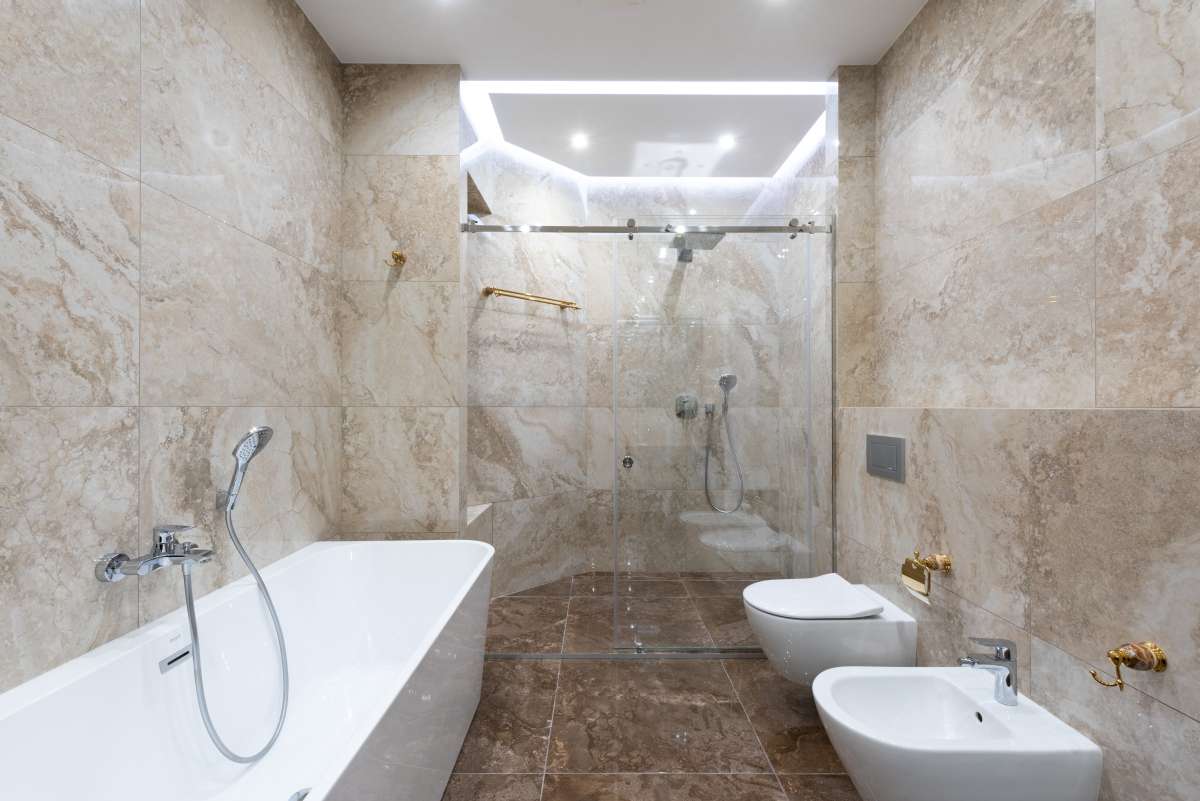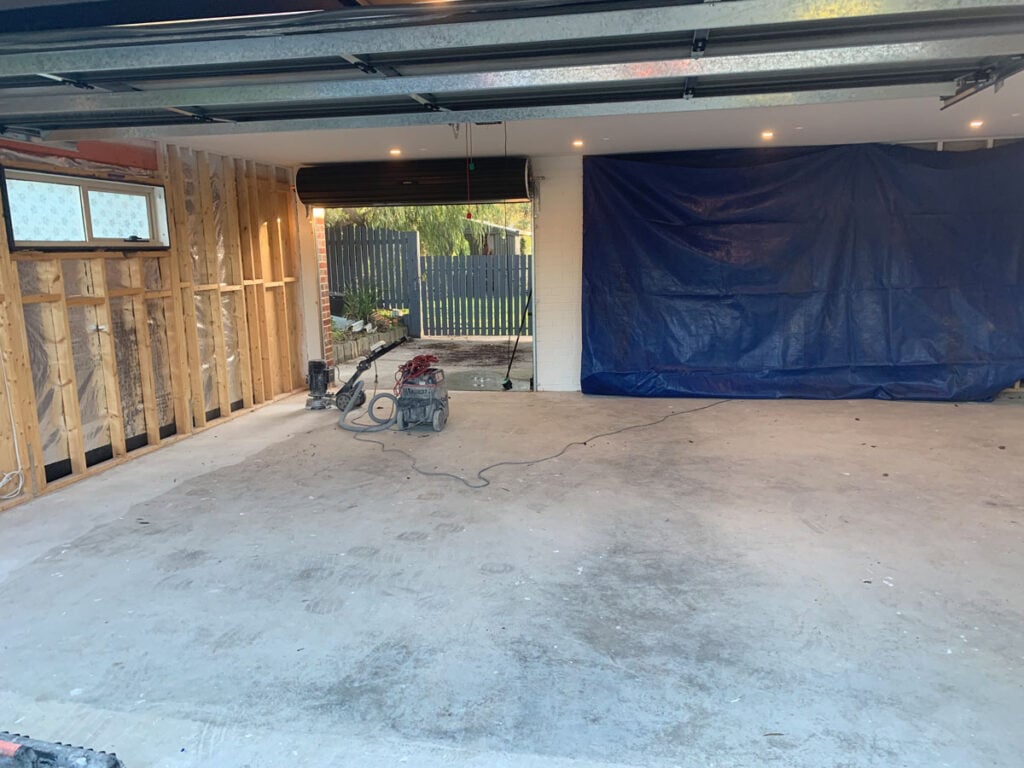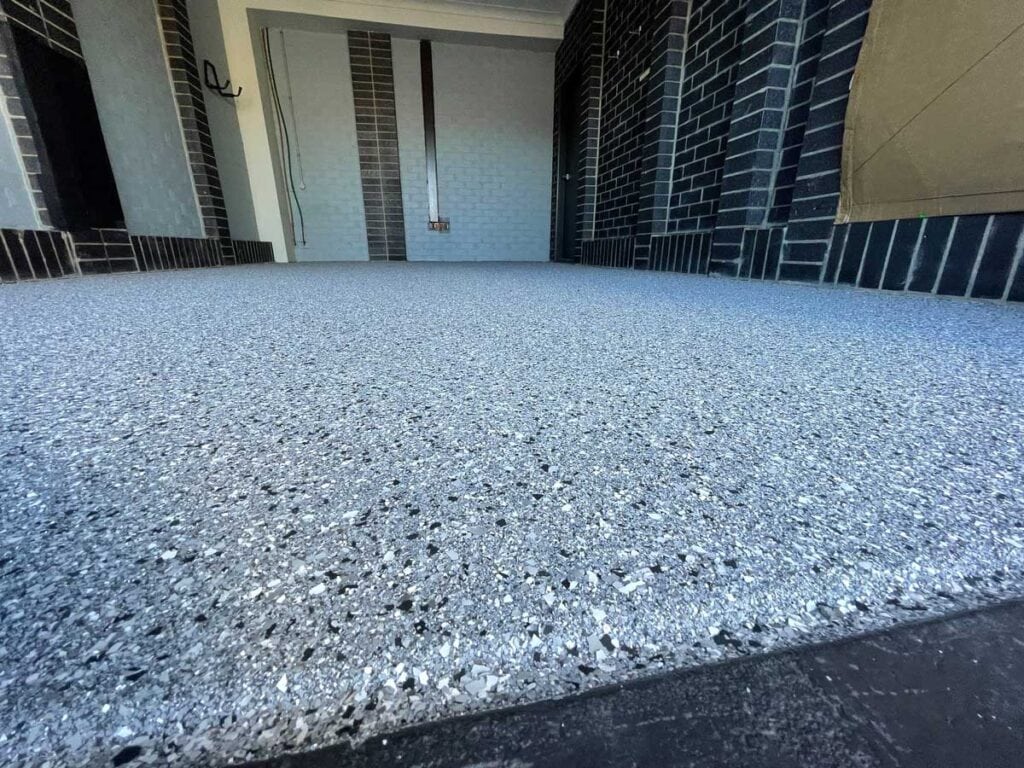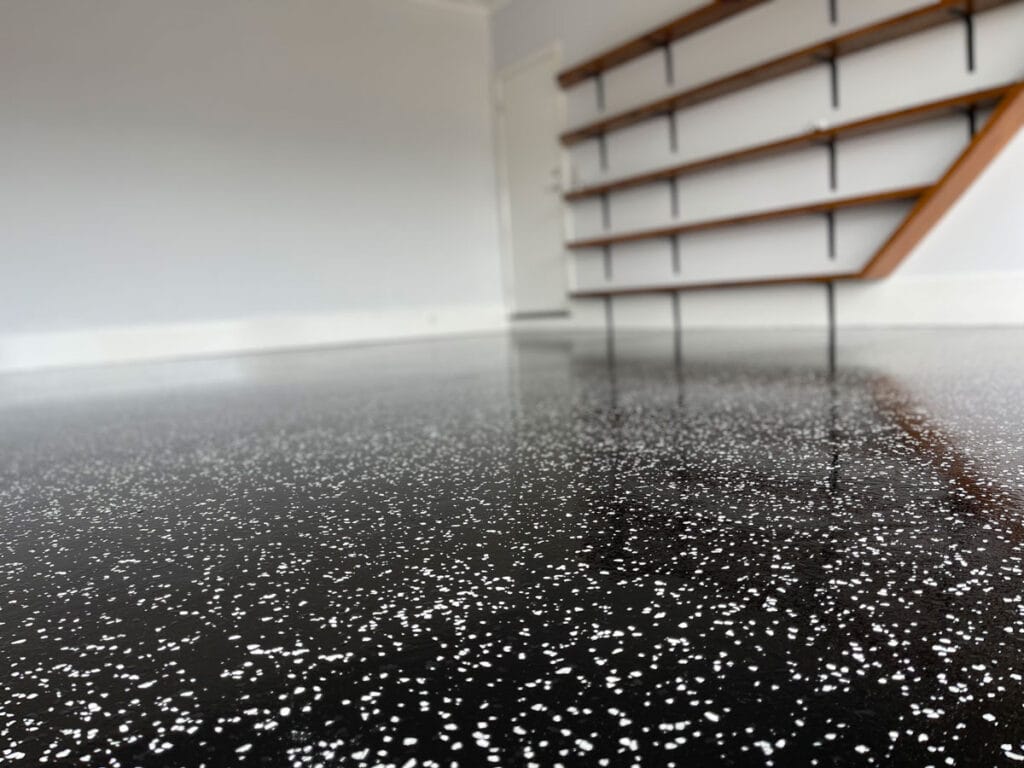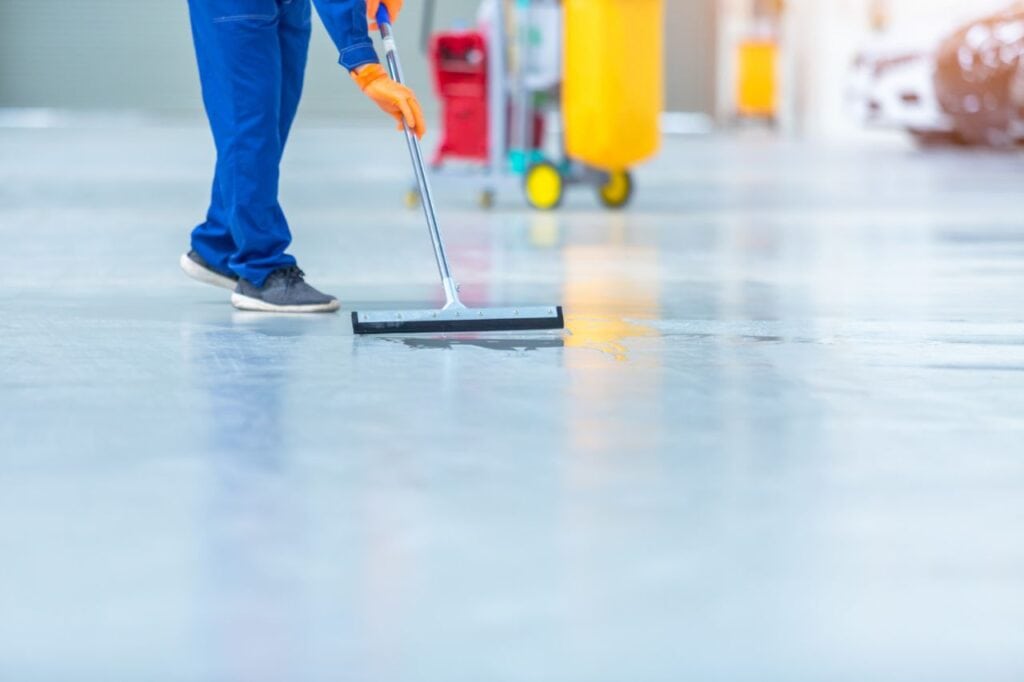Marble is a timeless and elegant material that adds a touch of sophistication to any space. It is available in various colours and veining patterns, making it a fantastic choice for flooring. However, marble is known for being porous and prone to staining, requiring specific cleaning agents to avoid damage.
For centuries, marble floors have been a symbol of timeless elegance. Their natural veining and colour variations complement various interior design styles, including midcentury modern, traditional, and Art Deco. While marble floors are highly durable, they need regular cleaning and proper care using the right products and tools to maintain their pristine appearance.
Cultured marble, conversely, is a synthetic material that closely resembles natural marble but is less porous due to applying a gel coat during manufacturing. It offers a similar aesthetic at a lower cost, although natural marble tends to exhibit more depth, while cultured marble has a high-gloss finish.
Whether natural or cultured, marble exudes an undeniable sense of sophistication and elegance, transforming homes and offices. Marble flooring, countertops, and vanities are beautiful, durable, and relatively easy to maintain. While cleaning marble floors requires more attention than vinyl floors, following these marble floor care tips will help simplify the task and keep your marble surfaces looking their best.
Maintenance of Marble Floors
The elegance and sophistication of marble floors cannot be denied. The variety of stunning colours and complex veining patterns in this stone make it stand out from the crowd. However, keep in mind that marble floors need constant care and attention.
Marble floors are delicate and porous, so they require special cleaning and maintenance to retain their lustre. Knowing which marble floor cleaner is best is essential. If you have marble floors, whether they are cultured or natural, sealed or not, you should know what not to use on them.
In order to keep your marble floors in pristine condition, you should never clean them with an all-purpose cleaner, bleach, an abrasive scrubber, or even a regular mop.
Furthermore, steamers and steam mops are not a good choice for cleaning marble floors. It's easy to assume that a steam mop would be an effective way to clean marble floors because of the material's apparent resilience, but the constant heat produced by such devices can actually permanently damage marble floors.
Instead of using harsh chemicals or hot steam, try one of these methods instead:
- Detergent-free cleaner with a pH of zero
- Dishwasher detergent without phosphates Stone soap designed for marble floors
You can get rid of dirt buildup, most stains, and even the expensive store-bought marble cleaners with any of the aforementioned floor cleaners.
Homemade floor cleaners containing hydrogen peroxide and distilled white vinegar can be used on marble, but only for removing stains. Natural cleaners are safe and effective, but they should not be used exclusively on marble floors because they can corrode the material and leave it looking dull and dirty. Now that we know what products work best, let's get to work learning how to clean marble floors properly.
How Often to Clean Marble Floors
Experts generally advise cleaning marble floors every seven to ten days. Of course, whether they are in high-traffic areas and whether you have children or pets in the home will determine how safe they are.
Important Factors to Consider
Because of its calcareous, alkaline composition, marble is corroded by acids. This chemical reaction may cause irreversible discoloration. This highlights the significance of using an appropriate cleaner.
Cleaning marble with ammonia or chlorine bleach can damage the finish irreparably. Avoid using abrasive cleaners or those that claim to "scour away" grime. Commercial acid-based cleaners, including those recommended for granite, as well as homemade concoctions containing distilled white vinegar or lemon juice, should be avoided at all costs.
Don't use waxes or cleaners that also claim to shine and disinfect. These were made for other surfaces, and they could make your marble look grungy and unsafe.
Tips for Cleaning Marble Floors
Stain removal is the first step in cleaning anything, whether it's a dirty carpet, a favourite shirt, or marble floors. The only thing worse than cleaning a marble floor is drying it off and discovering a stain. If you follow these guidelines, you can avoid a stain disaster and simplify your regular cleaning routine.
Clean Spills Immediately
It's important to quickly address any spills that may occur. Fruit juices, soft drinks, and vinegar-based condiment spills can etch glass, even if you use a protective sealant. The marble floor should be protected from scratches caused by dirt by promptly removing muddy footprints. To separate the liquid from the solids, use a damp microfiber cloth. Avoid making the stain even bigger by rubbing it in. Use a clean, damp cloth to quickly rinse the area, and then dry it thoroughly with a microfiber cloth to prevent spots and slipperiness.
Remove Marble Stains
If you act quickly after a spill on your marble floors, you can minimise the damage and restore the floor to near-new condition.
Fresh Stains
When you see a stain, you should clean it up because the marble could soak it up and spread it further into the grain. Depending on how well your floors are sealed, brightly coloured stains could quickly soak into the finish.
- Use a paper towel or clean cloth to soak up any stains, and then rub the stained area with white vinegar.
- Use dish soap and water to clean the area.
- Use a clean, damp cloth to wipe the area down, and then dry the floor.
- This process should be done as many times as needed.
Set Stains
A stronger stain-fighting solution and more effort will be required to remove a stain that has already set. Marble can absorb stains from foods like coffee, tea, and fruit. Instead of using vinegar, you can use hydrogen peroxide to get rid of these stains. Cover the stain with hydrogen peroxide and set it aside for 30 minutes. Buff the area dry with a clean, damp cloth after cleaning it. Voilà! A shiny, spotless marble.
Keep Dust and Dirt Out
Marble floors are best cleaned with a dry dust mop or a mop fitted with disposable dry sweeper cloths. Do not use any kind of dusting spray on the mop. In general, you should dry dust a marble floor once a week for every person who resides there. In order to protect the marble from scratches, a family of three will need to perform dry dusting three times a week.
Deep Cleaning Should Be Done Once a Month
Marble floors must be cleaned at least once a month or more often if they get a lot of traffic or are dirty. Use a cleaner without soap with a neutral pH (pH 7) if you can. This will leave fewer streaks or films behind. You can also use a mild dishwashing detergent without phosphates or stone soap made just for marble.
- To clean the stone, first wet the surface with clean water. If you don't want to soak the floor, use a spray bottle or a mop that has been rung out.
- Then, use a soft mop to spread the cleaning solution on the floor as the manufacturer directs.
- After that, rinse the surface well with clean water and replace the water as needed.
- Use a soft cloth to dry the surface. When you clean or spot-treat the marble floors, it is important to dry them. Some marble has iron oxide, which can be brought to the surface by water and leave rust stains.
Use Mild Detergents or Ph-Neutral Floor Cleaners
Ensure that the detergent you use to clean your marble floors is pH-neutral and gentle enough to use on marble.
Also, there are a lot of do-it-yourself recipes for non-toxic cleaners, many of which call for vinegar. And while vinegar can be useful on some floors, it should never be used on marble floors. Vinegar is much too acidic (the pH is between 2 and 3), and it will damage the surface of your marble floor.
Avoid vinegar, citrus cleaners, and ammonia when you clean your marble floors.
Treat Tough Stains
If the stain removal solution did not work, you can try these other options:
- Oil Stains: Remove as much oil as you can with paper towels, then use warm water and a drop or two of dish soap to clean the area. If the oil stain persists, dust some cornflour on it. The oil can be removed from the marble by leaving cornflour on it for at least four hours. Repeat this process until the stain disappears.
- Scuffs: Use a dry tennis ball to rub the scratch gently.
- Ink Stains: Put some rubbing alcohol on a clean cloth or paper towel and place it over the stain. After a few minutes, remove the ink by wiping it. Rinse the area thoroughly with plain water and pat dry. Repeat as necessary until the ink is gone.
- Organic Stains: Apply 12 percent hydrogen peroxide to a clean cloth or paper towel and leave it on the stain for 10 minutes. Verify that the stain is no longer present. If so, just use some soap and water and dry the area thoroughly. If the stain persists after following the steps, apply peroxide again and leave it alone for up to 30 minutes.
- Water Spots: The floor can be lightly wetted with plain water. Dry and polish the floor using large, circular motions and soft microfiber cloths.
Use Rugs and Carpets
If you want to keep your marble floors in great shape, add area rugs and carpets to high-traffic areas. Rugs and carpets will not only keep dirt and dust down but also keep your marble from getting too worn down.
How to Protect Your Marble Floors
Care for your marble floors goes beyond the standard monthly sweep, dust mop, and deep clean.
Removing Scuffs
Safely remove shoe marks and other surface scuffs from marble floors with a tennis ball. Putting felt pads on the feet of your furniture will protect your marble flooring. Doormats at each entryway can further help keep the outside from tracking dirt and dust inside.
Sealing Marble Floors
Marble floors can be sealed by the homeowner or by a professional service. When applied to the marble, a sealant forms a protective barrier that keeps out grime and stains. A sealed marble floor still requires regular maintenance, but you won't have to scrub out the stains. Sealing a marble floor is another simple project for the do-it-yourself enthusiast. Your neighbourhood hardware store should stock a variety of sealants to meet your needs.
Keep Marble Floors Looking Good Longer
- Protect your floors from grit that could scratch them by using non-slip doormats both inside and outside the door.
- Pad the legs of your furniture to protect your floors from scratches, and never drag a heavy piece of furniture.
- Slippery floors like bathrooms and kitchens benefit from honed, tumbled, or brushed marble.
- It's best to stay away from any equipment or cleaning methods that could damage the floor.
- Apply a second coat of a sealant designed for marble floors as directed.
Conclusion
Marble floors are a timeless and elegant material that adds a touch of sophistication to any space. However, they are porous and prone to staining, so they need regular cleaning and proper care. Cultured marble is a synthetic material that closely resembles natural marble but is less porous due to applying a gel coat during manufacturing. Marble flooring, countertops, and vanities are beautiful, durable, and relatively easy to maintain. To keep marble floors in pristine condition, it is important to avoid using harsh chemicals or hot steam.
Instead, try a detergent-free cleaner with a pH of zero. Dishwasher detergent without phosphates and stone soap designed for marble floors can be used to remove dirt buildup, most stains, and expensive store-bought marble cleaners. However, natural cleaners should not be used exclusively on marble floors because they can corrode the material and leave it looking dull and dirty. Experts generally advise cleaning marble floors every seven to ten days, and it is important to use an appropriate cleaner. Tips for cleaning marble floors include cleaning spills Immediately, using a damp microfiber cloth to separate the liquid from the solids, and drying the area thoroughly with a microfiber cloth.
Marble floors should be cleaned quickly after a spill to minimise damage and restore the floor to near-new condition. Fresh stains should be cleaned up with white vinegar, dish soap, and water. Set stains should be removed with hydrogen peroxide. Dust and dirt should be kept out with a dry dust mop. Deep cleaning should be done once a month with a cleaner without soap with a neutral pH (pH 7) and a mild dishwashing detergent without phosphates or stone soap made just for marble.
When cleaning or spot-treating marble floors, it is important to dry them. To do this, use mild detergents or pH-neutral floor cleaners, avoid vinegar, citrus cleaners, and ammonia, and treat tough stains with oil, scuffs, ink, organic, water spots, and rugs and carpets. To protect your marble floors, add area rugs and carpets to high-traffic areas. These will keep dirt and dust down and keep your marble from getting too worn down. Care for marble floors includes removing scuffs, sealing them, protecting them from grit, using non-slip doormats, and using honed, tumbled, or brushed marble.
Regular maintenance is necessary, but a sealant can help keep out grime and stains. To keep floors looking good longer, use non-slip doormats, pad the legs of furniture, and avoid equipment or cleaning methods that could damage the floor. Apply a second coat of a sealant as directed.
Content Summary
- Marble floors are timeless and add sophistication to any space.
- Marble floors come in various colors and veining patterns.
- Cultured marble is a synthetic material that resembles natural marble.
- Natural marble has more depth, while cultured marble has a high-gloss finish.
- Marble floors require regular cleaning and proper care.
- Avoid using all-purpose cleaners, bleach, or abrasive scrubbers on marble floors.
- Steamers and steam mops can permanently damage marble floors.
- Use detergent-free cleaners or stone soap designed for marble floors.
- Homemade cleaners with hydrogen peroxide and vinegar can be used for stain removal.
- Natural cleaners should not be used exclusively on marble floors.
- Clean marble floors every seven to ten days.
- Marble is corroded by acids, so use an appropriate cleaner.
- Avoid using ammonia, chlorine bleach, or acid-based cleaners on marble.
- Don't use waxes or cleaners that claim to shine and disinfect on marble floors.
- Clean spills on marble floors immediately to avoid stains.
- Use a damp cloth to separate liquid from solids when cleaning spills.
- Avoid rubbing stains to prevent making them bigger.
- Use white vinegar or dish soap and water to clean fresh stains on marble floors.
- Hydrogen peroxide can be used to remove set stains on marble floors.
- Dry dust marble floors with a dust mop or disposable dry sweeper cloths.
- Deep clean marble floors at least once a month.
- Use mild detergents or pH-neutral floor cleaners for marble floors.
- Avoid using vinegar, citrus cleaners, or ammonia on marble floors.
- Treat tough stains on marble floors with specific methods.
- Use rugs and carpets in high-traffic areas to protect marble floors.
- Remove scuffs from marble floors with a tennis ball.
- Seal marble floors to protect them from grime and stains.
- Use non-slip doormats and furniture pads to prevent scratches on marble floors.
- Choose appropriate marble finishes for slippery areas like bathrooms and kitchens.
- Avoid using equipment or cleaning methods that could damage marble floors.
Frequently Asked Questions
There are special marble cleaning solutions, but regular dish soap works well. Mix a little soap into warm water in a spray bottle, or put a few drops onto a wet cloth. Wipe the marble surface down with this sudsy cloth and follow immediately with a rinse and a dry.
Microfiber
Use a microfiber or soft mop head attached to a plastic mop handle. Wooden mop handles and metal hardware can scratch marble floors.
Avoid harsh chemicals on your marble floor, so it is safest to clean them naturally. Use hot water mixed with pH-neutral dish detergent. You can use environmentally friendly dish soap if you wish.
Acidic substances can etch the surface and leave the marble dull and lacklustre. This is something to keep in mind when choosing cleaners for the countertop. Any acidic or abrasive cleaner like bleach and vinegar should be avoided, and you should never use harsh scrubbing pads.
Marble can last more than 100 years, according to the National Association of Home Builders. But it does need attention and maintenance. It's not the hardest material and can suffer chips and dents. Frequent sealing of marble countertops will ensure that they last a lifetime.


